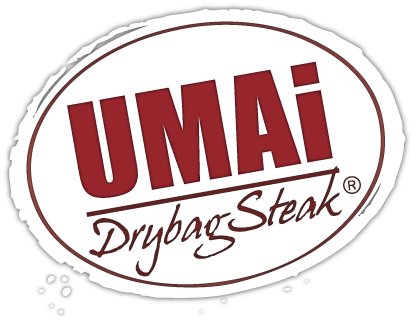What cuts of beef are best for dry aging?
Fatty well marbled whole muscle cuts of beef are best for dry aging because you get three out of three benefits that dry aging offers:
1. Concentration of beef flavor through moisture evaporation
2. Tenderization of beef muscle connective tissue through natural beef enzyme activity
3. Oxidation of fat which imparts a nutty, earthy flavor to the steak
Ribeye comes from the middle section of the beef carcass and typically has a fat kernel in the middle giving a perfect consistency for dry aging. Other names for ribeye are: Scotch filet in Australia, NZ and other former British Colonies, entrecote in europe,
Striploin comes from the rear section of the rib and typically has similar marbling to the ribeye and derives similar benefits from dry aging as the ribeye.
Top Sirloin comes from the section right behind the Striploin and is typically a leaner cut consisting of several different muscles that have the grain running in opposite directions. This cut is also often dry aged and is a bit more complicated to cut into uniform steaks.
Can I dry age Tenderloin to make filet mignon?
Tenderloin is a very lean and already tender cut of meat found in the spinal section of the carcass. It is quite small in size and long. It can be dry aged only to impart a more beefy flavor to it. The dry aging time should be limited to 4-5 days in order to avoid forming a dry crust on the surface that later would need to be removed. A good method of dry aging tenderloin is to encrust it in spices and age it for 4-5 days to serve as spice crusted filet mignon.
Will the meat spoil if I age it too long?
In principal aging of meat is actually controlled degradation. Similar to a process of aging wine which can technically be called “rotten grapes”, beef is aged to tenderize it through controlled breakdown of its connective tissues by the natural enzymes found within and oxygen. The degree of this breakdown is determined by the aging conditions and time. In typical household refrigerator where milk and eggs are stored, beef is recommended to be aged up to 60 days in UMAi Dry bags. Most common aging time is 28-35 days. Aging beyond 60 days offers little benefit and may impart undesirable characteristics to the steak.
Can I age other cuts like Brisket or Tri-tip?
Aging flat and lean cuts of beef like Brisket or Tri-tip does intensify the beef flavor of these cuts and results in a more tender texture, but this comes at the price of having to trim some lean meat in the form of a crust that forms during aging. Unlike a Ribeye, Striploin or a Sirloin where a fat cap is present and is normally removed with or without aging, the Brisket and the Trip-tip are lean all the way around. The dry crust that forms during aging may need to be removed before cooking, therefore resulting in a higher trim loss for these cuts.
Do I need a dedicated refrigerator to dry age with UMAi Dry?
No dedicated refrigerator is required when dry aging using UMAi Dry. The meat can be placed on an open wire rack in a household refrigerator that is used for storing other food items.
There are few things in life that get better with age, beef is one of them……

